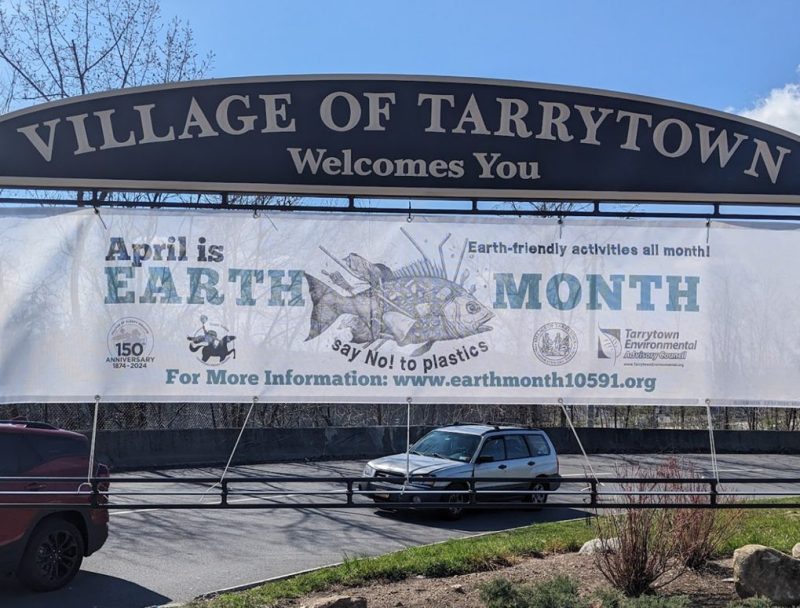Revolutionary Westchester: John Odell, General Washington’s Westchester Guide, Part I
By Erik Weiselberg, Ph.D.
Principal Historian, Revolutionary Westchester 250 and Village Historian, Irvington, New York
Previously we shared the wartime experiences of a captain and a private in the local militia. This installment tells the exploits of the most famous of the Westchester Guides, including hair-raising events that unfolded in and around the hills and valleys of our Rivertown communities. With the benefit of multiple source materials – including pension records, newly-available resources, and a variety of older resources compiled and corroborated for the first time – we are able to relate with extraordinary detail the war-time tales of the people of Westchester County nearly 250 years ago.
When impending war threatened in the spring of 1776, the first man to volunteer for the Westchester Militia at the Tarrytown Green under the giant white-wood tree was nineteen-year-old John Odell. During the war Odell served as a private in the local militia, a lieutenant in the Mohawk Valley, and as a Westchester Guide, one of an elite group of local men who acted as scouts, pathfinders and advisors for Continental Army officers. As the war dragged on, Odell’s skill and perseverance earned him a well-deserved reputation that eventually brought him to the attention of General George Washington. Two of the homes he lived in within the Town of Greenburgh still stand nearly 250 years later, and other historic markers and his gravesite in Westchester also keep alive the legacy of Odell’s amazing life.
Around 1774 the Odells, including eighteen-year-old John, moved onto leasehold in Philipse Manor, a 436-acre farm on the banks of the Hudson River. John Odell (1756-1835) was born in Cortlandt Manor on October 24, 1756, the third of eleven children of Jonathan Odell (1730-1818) and Margaret Dyckman (1732-1783). The Odells lived in a farmhouse located on the Albany Post Road that had originally been built in 1693 as a one-room, square, stone structure, but expanded before the Odells moved in. Commonly referred to today as “The Odell Tavern,” the building , well preserved, is located on private property at 100 South Broadway, and to this day remains the oldest building in Irvington and one of the oldest in the county.
When the tenants of Philipse Manor were threatened in July of 1776 by the presence of the British warships Phoenix and Rose in the Tappan Zee, local men such as John Odell and his brothers volunteered for the militia. Early on, Odell’s company was assigned to construction work in and around Kingsbridge in today’s Bronx and New York City, but John’s family’s farmhouse itself was an important site during the war, playing a fortuitous role in the early history of the fledgling New York State government. After the British defeated George Washington’s Continental Army at the Battle of Long Island on August 27, 1776, the New York Committee of Safety’s members fled the city and began travelling up the eastern shore of the Hudson River. They stopped on August 31, 1776 at “the house of Mr. Odell, Philipse’s Manor,” where they continued to coordinate their resistance and they corresponded with General Washington.
A few months later several units of the British army withdrawing from the Battle of White Plains camped on Jonathan Odell’s farm, although his son John was away on service at the time. Jonathan Odell was taken prisoner, and the occupying army stripped the farm of its orchards, wheat and hogs. Caesar, an enslaved person of African ancestry, offered valiant resistance against the British attempts to commandeer the products of the Odell farm. While the British army might have simply been taking needed resources, it is likely that they were also aware of the active patriotism of the Odell family.

| Odell Tavern, Irvington
The Odell family moved into this farmhouse in 1774. During the Revolutionary War young John Odell became a noted Westchester Guide in service to the Continental Army and to General Washington. For one day in 1776, the home served as the seat of the revolutionary government. After the Battle of White Plains, the British Army camped on the property, took provisions and imprisoned Jonathan Odell, the family patriarch. After the war, part of the land was sold off to Alexander Hamilton’s son James Alexander Hamilton. John’s brother William inherited the farmhouse and some acreage, while John himself purchased a farm nearby in what is now Hartsdale, the former headquarters of the French general the Comte de Rochambeau. In the early twentieth century, the Odell Tavern was a frequent destination of the Westchester County Historical Society’s annual pilgrimages (pictured). The structure, located in Irvington, is on private property. |
When the Continental Army attempted in January of 1777 to recapture Fort Independence in nearby Kingsbridge, John Odell, along with his cousins Abraham and Michael Dyckman, served ably as guides. Regrettably, poor planning by the Continental Army leadership and the arrival of a massive snowstorm forced them to withdraw without achieving their objective.
After this failure, General Washington looked skeptically upon the use of militia in battlefield combat. However, as the conditions in Westchester evolved in the ensuing war years, Washington would use the militia as a home guard, and would be forced to accept the importance of skilled local guides, such as John Odell, who would eventually come to the general’s attention.
In July of 1778 the Continental Army returned to White Plains and General Washington created innovative light infantry and cavalry units to be drawn from Continental Army battalions. In Westchester’s difficult topography and hotly-contested terrain, these light infantry units could move quickly to carry out hit-and-run raids, scouting missions, and foraging expeditions. Detailed knowledge of the woods, rivers and rugged terrain was essential, and trusted locals who had such intimate knowledge were recruited as guides. Commanders and soldiers from New England, Pennsylvania, Maryland and Virginia were guided around Westchester by 15 to 20 such scouts including John Odell, who rose to distinction. When he was appointed guide, Lieutenant Governor Pierre Van Cortlandt presented him with a pair of pistols and with a dapple-grey horse that he rode throughout the war. As was customary at that time, the guides were not officially a part of the Continental Army establishment, but the hazards and stress were real, and their assistance proved vital. The duty Odell performed as a guide, he later said, “was very difficult and hazardous and often in the night time and it was necessary for him to be almost constantly on the alert moving up and down the American lines to see if any enemy was out and to get intelligence of the enemy’s movements and to lead and conduct the parties and troops when under march through the said County of Westchester.”
Standing six feet tall, John Odell was noted not only for his physical bearing, but also his keen mind and cool disposition. Odell developed a technique with his saber that was suited to his large frame and lengthy limbs: he would lean far back in the saddle so as to strike a pursuer from a great distance. Odell’s marshal prowess was so notorious that a £100 reward had been offered by the British for his capture, and it was said that he was so well respected by the enemy that they always approached him cautiously. Odell kept on his guard, prepared for surprises, and when things went awry, as they often did in the no-man’s land between the lines, Odell’s prior planning turned out to be invaluable.
In August of 1778 Odell was assigned to one of Washington’s light infantry companies. The commander, from Maryland, had set up camp at an advanced position close to enemy lines, near Philipse Manor Hall in today’s Yonkers, on the hilltop – now Oakland Cemetery. On September 16, British forces surrounded the camp before springing upon the surprised men. Many of the panic-stricken patriots dropped their muskets and began to surrender, but Odell encouraged the men to take up their arms and led them west across the Saw Mill River to safety.
Later that month, John’s cousin, Isaac “Uck” Odell, served as guide on an expedition near the border of today’s Hastings and Dobbs Ferry in which American forces annihilated an elite troop of Hessian Jägers in an encounter which has since been called “The Battle of Edgar’s Lane.” Two historical markers from the 1930s commemorate the site, and a new interpretive installation is currently being planned by Revolutionary Hastings.

| The Queen’s Rangers
In September of 1778 near Yonkers, the noted guide John Odell bravely led a company of Continental Army light infantry towards safety, escaping encirclement by the Queen’s Rangers and other specialized units in service to the British crown. Source: Charles M. Lefferts, Uniforms of the Armies in the War of the American Revolution, 1775-1783 (1926). |
Through 1778 the Odells, including John’s father, brothers and cousins, played essential roles in helping the Continental Army officers and soldiers defend the fledging nation in its struggle for its very existence. For the Odells, patriotic service was a family affair. The next five years of warfare would bring new challenges and opportunities for the Odell family, including John Odell’s service as guide to General Washington himself.
Read or leave a comment on this story... Print
Print


























3 thoughts on “Revolutionary Westchester: John Odell, General Washington’s Westchester Guide, Part I”
Sorry, comments are closed.